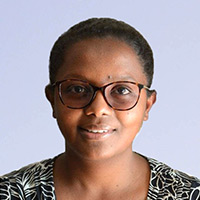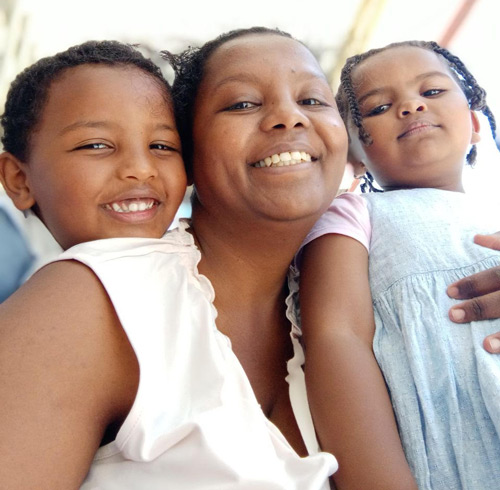“We should better connect local health posts and urban hospitals”

Dr. Meron A. Gebrewold
Dr. Gebrewold, neurologist and teacher at Ethiopia’s largest School of Medicine, speaks about challenges in the ambulance system, and opportunities in digitalization for rural areas and the health care system.
I am a neurologist and assistant professor of neurology at the College of Health Sciences. The School of Medicine under the College of Health Sciences has 21 departments with 2,000 employees. AAU is the only university in Ethiopia where neurology as a discipline is offered as a specialty training. I teach and mentor postgraduate and undergraduate students and work as research advisor.
That is true. The World Health Organization recommends one neurologist per 100,000 people. We have 70 neurologists in the whole country of 111 million. In Ethiopia, neurology training just started in 2006. Nineteen neurologists work at the teaching hospital of the University of AAU, the Tikur Anbessa Specialized Hospital. It is the largest hospital in Ethiopia with an 800 bed capacity, and no other hospital in the country has such a high number of neurologists. Currently, the big regional hospitals employ one or two neurologists.
The digitalization process started well before COVID-19. But COVID catalyzed it. Now we are communicating via Zoom, Google Meets, or WebEx. It became the new normal within months. We are also giving joint live seminars with faculty who are based in America now.
In neurology, we have 29 resident students and 15 undergraduates now. But overall, we have around 540 students. We had online teaching sessions during the pandemic lockdown, and I moderated distance learning. We assigned the students Lecturio video sessions and quiz questions. The undergraduates have always preferred face to face rounds because they have just started their clinical rotations and yearn for direct experiences. The clinical year 2 students use Lecturio much more. The feedback from them is quite positive. It’s a user-friendly platform and we as faculty can see who has answered the quizzes and who has done the assignments given to them. It’s an amazing platform.
No, not really. Students and faculties just don’t tend to go to the platform alone. They need a first push. But when they have once used Lecturio, they really like it, because it makes their lives easier.
Digitalization enables more interdisciplinarity in the hospital, for instance between neurology, neuroradiology, and pathology. Physicians get the electronic medical record now. We have an electronic patient care system. It connects, for instance, laboratory, pharmacy, and neuro imaging. But there are still a lot of opportunities. For instance, connecting urban centers and hospitals better to rural areas.
Let me explain it from my perspective as a stroke expert. I work at the largest hospital in the country, which has the biggest stroke expertise. Of course, technology for stroke treatment has advanced very much in the last decade. Many countries have very well-organized rescue chains in place now. People must get treatment within the first 4.5 hours for chemical thrombosis and 16 hours for thrombectomy. That is essential. But Ethiopia is still struggling very much with this topic.
Many stroke patients come from upcountry and rural areas and have a very long travel time. Most of them come by public transport because they do not have money for a taxi or their own car.
Patients usually go first to their local health post and after that to a physician at their regional hospital. That alone takes a lot of time, sometimes days. When they finally reach our hospital in Addis by a public bus, they often come with a little handwritten paper from their physician and the diagnosis is not always correct. That whole process costs too much time and lives. Digitalization could improve this – not only in education, but also in consultation. We should have a system in place which better connects the local health posts and the urban hospitals. We could support via video streams and consultations, and the health workers and colleagues upcountry could also get digital in-service education.
Studies show that only 30 percent of stroke patients at our hospital arrive by ambulance . The ambulance system is very much concentrated in the capital Addis Ababa and some private hospitals offer it. But it is very expensive. Common people cannot afford it and often the ambulances are poorly equipped. They still might have oxygen but no monitoring instruments and no paramedics. ![]()

Dr. Meron A. Gebrewold is the Secretary for the Association of Ethiopian Neurologists, a Secretary for the Board of Exam Committee for Entrance Examination into School Medicine of the AAU, and active member in the World Stroke Association. She is a mother of two children.
Start Your Journey with Lecturio
Interested to learn how we can support your goals at the individual or institutional level?
Schedule a
tailored demo
Let our experts show you our learning platform.
Get a quote for
your institution
Tell us more about your use case and receive a quote.
Have a question?
Our team has an answer!
Email us any questions you would like us to address.